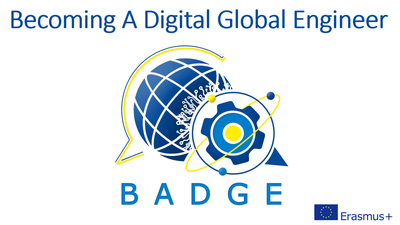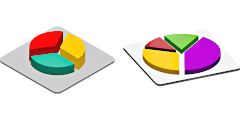BADGE – Becoming a Digital Global Engineer

Intellectual Output
BADGE – Becoming a Digital Global Engineer
Project 2019-1-FR01-KA203-063010 (167 512 512)

BADGE – Becoming a Digital Global Engineer
Project 2019-1-FR01-KA203-063010 (167 512 512)

After studying this unit, you will …

We are undoubtedly a generation for which communicating information visually is of special importance. The use of television, cinema, colorful advertisements, YouTube, computer games, mms, emoticons, videos and FaceTime phone calls, as well as many other applications, means that we are accustomed to seeing pictures or graphics accompanying information and illustrating content. In addition, it is relatively common for speakers to use visual communication to support what they want to say during a presentation. Similarly, the graphical representation of data can effectively create and deepen the meaning conveyed by a presenter.
The proverb “a picture is worth a thousand words” summarizes the common truth that most people think in pictures, not words. Oral communication itself can, in some cases, be difficult to follow, therefore illustrating what we have to say with concrete examples and images, as well as using similarities and differences, helps listeners imagine, understand and remember.
Visual communication is a creative process which combines visual design and technology to communicate ideas. It begins with a message which is transformed into visual communication that goes beyond mere words and pictures. By controlling the type of visual aids, movement, symbols, colours, and images, the visual communication designer creates and manages the production of visuals designed to inform, educate, persuade, and even entertain a specific audience.
Generally speaking, visual communication refers to any non-verbal communication that uses the sense of sight and, consequently, involves anything that expresses a message and offers information with the assistance of visual aids, slides, pictures, conceptual maps, signs, as well as body language.
Scientific visual communication includes many different mediums, for instance, objects, models, charts, diagrams, graphs, photographs, maps, videos, three-dimensional and projected aids, presentations, etc.
There are several reasons why visual communication should go hand in hand with verbal communication. The first one is that it saves time. Processing a visual sign as compared to a paragraph of text can be faster, therefore it is more efficient to relay a message to an audience with the help of visuals. The second advantage of visual communication is that understanding and clarity increase. People are drawn to visuals that use attractive images and graphics. Hence, a verbal message accompanied by visual communication is preferable when it comes to providing information to an audience. The third reason is the greater retention of information. People remember more when they hear and see something simultaneously, and the information is also then retained for longer.
The ability to analyse data and synthesize information are two very basic but important processes necessary for both the design and reading of data or graphic information. The appropriate interpretation of data presented in graphic materials is a far-reaching consequence and derivative of the previous analysis and synthesis.
The process of inspecting, transforming and modelling data with the goal of discovering useful information and drawing conclusions is defined as data analysis. There are many approaches to doing this, encompassing a variety of techniques with different names, and they are used in both science and social science. From the scientific perspective, data analysis plays an essential role in drawing scientific conclusions and helping scientists operate more effectively.
Synthesis, as the opposite of analysis, is a process of bringing together data from a set of included studies with the aim of drawing conclusions and studying findings. Furthermore, synthesis can be used to guide the process of comparing, analyzing similarities, and interpreting and describing the results.
The visual support for spoken or written content also plays a very significant role when preparing and delivering a presentation. Visual aids used throughout a speech can help the audience see the point and remember the facts. In order to use the visuals wisely, however, they need to be designed and written clearly and logically. It is crucial to choose the proper visual aid. Graphic (graphs and charts), three-dimensional and projected aids are the basic examples of visuals which can be used. These will be looked at in the next units of the module.
Kumar, P. (2016). 20 infographic and video facts to feel the power of visual content. Business 2 Community.
McCarthy, M., O’Dell, F. (2016). “Academic Vocabulary in Use”, Cambridge University Press.
Reynolds, S., Valentine, D. (2006). “Guide for internationals” Culture, communication and ESL (English as a Second Language) (Prentice Hall Series in Advanced Business Communication). Pearson Prentice Hall.
Szczuka-Dorna, L., Vendome, E. (2017). “Introduction to Interpersonal Communication”. Poznan Publishing House of Poznan University of Technology.